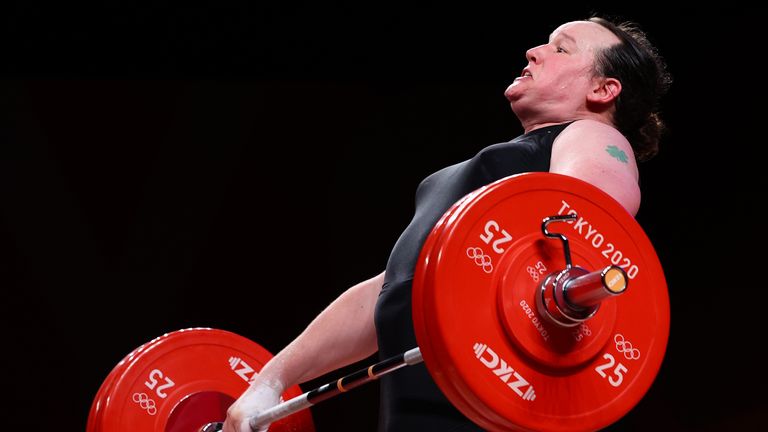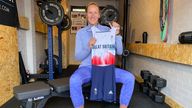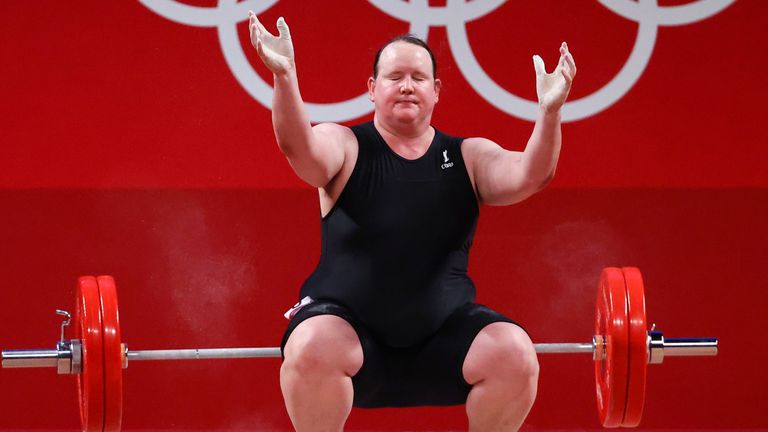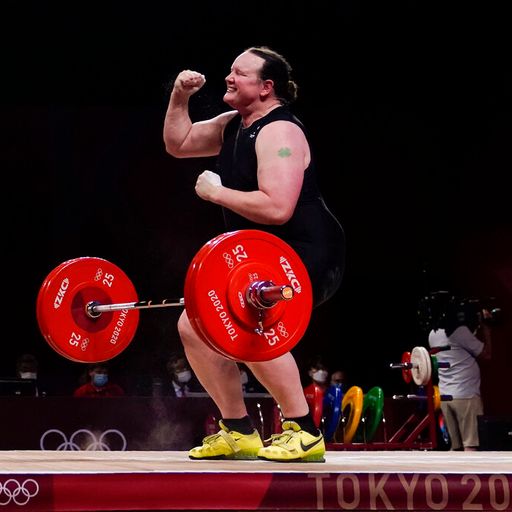Tokyo Olympics: Individual sports may have to find their own evidence-based sweet spots to celebrate inclusivity in a fair way
The International Olympic Committee is expected to ask different sporting federations to make decisions for their own competitions when it comes to the inclusion of athletes who were born men, but have since transitioned and are now competing against women.
Monday 2 August 2021 16:36, UK
Olympic athletes are, by definition, extraordinary human beings.
"Faster, higher, stronger," goes the motto.
And the athletes in Tokyo have delivered.
The two men who shared gold in the high jump over the weekend flopped over a bar as high as the ceiling of my living room. It's beyond comprehension.
Hours of training and a strict diet are a big part of their success. But nature also gives some people a physical advantage at birth.
Michael Phelps, the American swimmer who has won more medals than any other athlete, had enormous feet, long arms and double-jointed ankles that gave him extra power in the water.
The men racing against him were realistically competing for silver. But they didn't begrudge him his natural advantage.
So what should sport do about athletes who were born as men, but have since transitioned and are now competing against women?
To some, Laurel Hubbard, the transgender Kiwi weightlifter, is a role model for inclusivity.
To others she represents a fundamental threat to female sport.
As it happens, she was nowhere near a medal position in the super-heavyweight competition in Tokyo.
But at the Pacific Games in 2019 she beat two Samoan athletes, both natal-females. It prompted the islands' prime minister to ask how it could be fair.
The International Olympic Committee has tried to use science to level the playing field for female events.
The rule since 2015 has been that trans athletes have to keep testosterone levels below 10 nmol/L for at least a year by using other medication to block the hormone.
That's still at the lower end of the normal range for a young healthy man, which is between 7.7 and 29.4 nmol/L.
So it's still controversial.
The IAAF, the athletics body, sets the limit much lower at 5 nmol/L, roughly half-way between the expected upper limit for a woman and lower limit for a man.
But even that doesn't satisfy everyone.
Scientists advising the IOC in the run-up to the games had been asked to update the rules.
But while some favoured adopting the same limit as the IAAF, others are understood to have been concerned that male puberty remains an advantage, even if testosterone levels are later suppressed.
The surge of the male sex hormone in the teen years makes the skeleton bigger and broader, it increases muscle mass and it decreases body fat, and it helps blood cells carry more oxygen by raising haemoglobin levels.
Not all of that is undone by taking testosterone blockers.
World Rugby bans trans-athletes from high-level competition, even if they reduce their testosterone, because their size and strength is an injury risk to other players.
So what is fair to female athletes, whichever gender they were assigned at birth?
It looks like the IOC will in future ask individual sporting federations to make decisions for their own competitions.
It will allow safety and biological advantage to be judged case-by-case
What's right for shooting may not be right for the javelin.
But each sport might then find an evidence-based sweet spot that celebrates inclusivity without reducing natal-females to also-rans.







